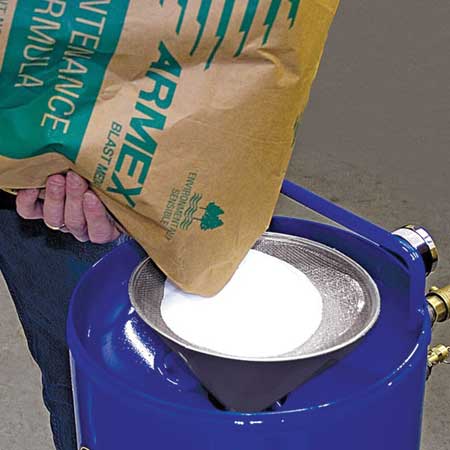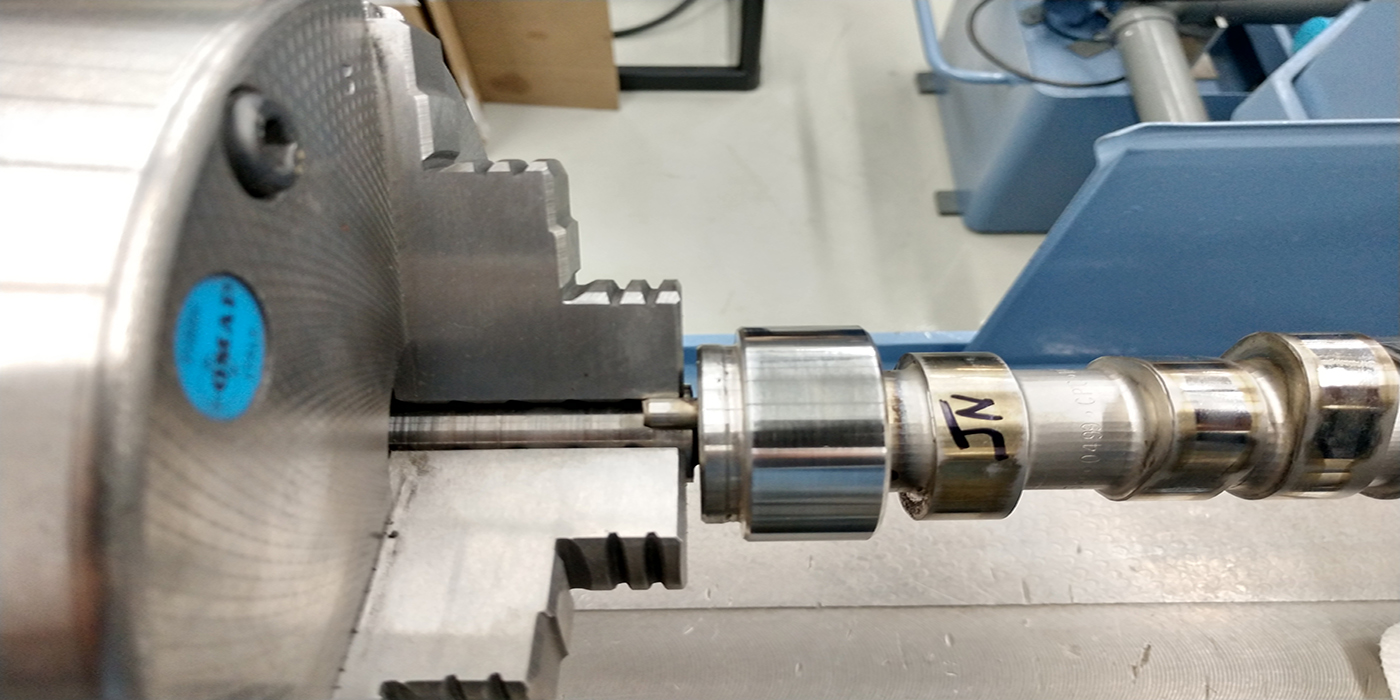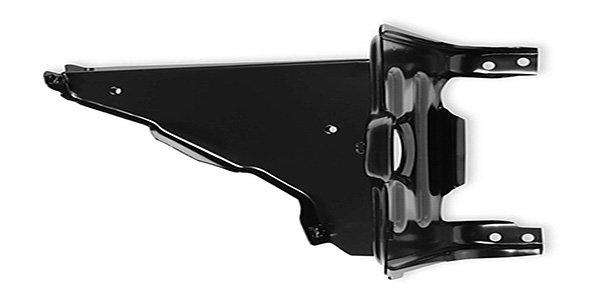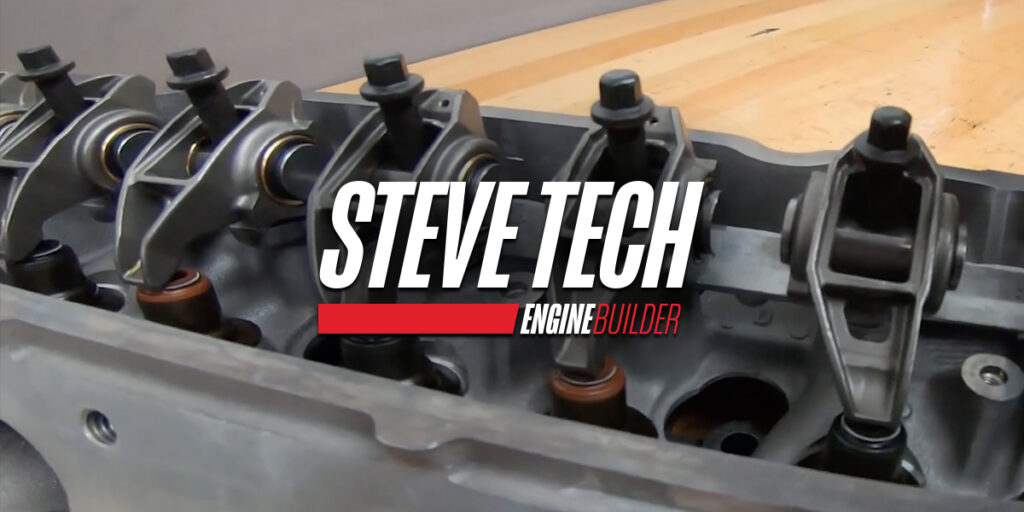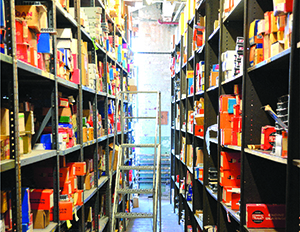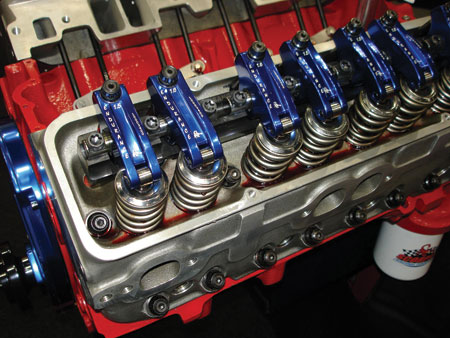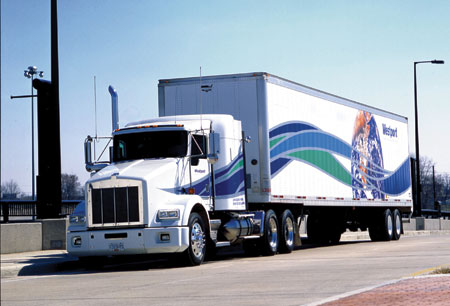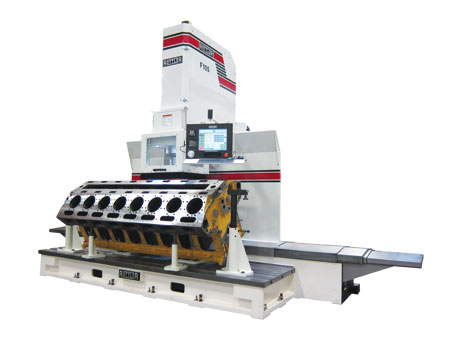It may seem that there’s nothing natural about cleaning an engine. Even after the couple of hours of cleaning time, the engine might be cleaner than the tech working on it – but the engine still needs cleaned (and so does the cleaning crew from time to time).
We are long from the days of chemical soaking followed by a dose of elbow grease. There’s Environmental Protection Agency (EPA) and Occupational Safety and Health Administration (OSHA) standards to follow.
Also, the arrivals of new metal alloys react adversely to the caustic chemicals and the extreme heat of a thermal blast oven.
“The reason some are moving away from the blast oven is because many parts are being made out of lighter materials like aluminum,” said Delia Downes, product manager for ARMEX, a manufacturer of soda-based media. She says aluminum is sensitive to harsh cleaning processes and harder grit abrasives, if there’s any abrasive blasting.
In addition, what should shops do with the excess wastewater and solvent? The answer should not involve a sink and/or drain.
“Engine guys use a lot of parts cleaners in the shop,” said Buddy Judy, head of Safety Kleen’s motorsports program. “So whatever you are doing, whether you have water based parts cleaner or petroleum solvent based, you should make sure that material is getting recycled.”
Some shops enlist various recycling methods in their engine cleaning like the use of a basic rinse tank that simply recirculates water for reuse. Other shops – when dealing with more older engine parts – learn it’s wise to avoid the hassle altogether.
“When we get vintage vehicles, instead of doing it in-house, we rely on chemical stripping companies to take care of the cleaning,” said Frank Honsowetz, Ed Pink Racing in Van Nuys, CA. “That way, we don’t have to deal with issues of cleaning engines that haven’t been taken apart in a while.”
As for the average engine, Honsowetz’s shop uses different kinds of cleaning tanks. One of these is from AXE Equipment, a manufacturer of agitating hot tanks with capacities from 150 to 300 gallons.
Other shops prefer to use a combination of thermal and wet cleaning to get the job done. Mike Eighmy, of Precision Automotive Diesel in Rockford, IL, has in place a long-time system for his shop’s cleaning.
“For a lot of our cleaning needs, we do use an aqueous cleaner, as well as a couple of jet washers in a closed system,” he said. “We also have a bake oven and shot blast system; a three-stage system that we use for some of our heavier cleaning.”
Thermal cleaning can offer many advantages as well as disadvantages, Eighmy says. Once in a thermal oven, an engine’s oil galleries are thoroughly cleaned out as the rust and scaling turns to ash. But the ash can still contain harmful particles. Soda blasting can offer another cleaning alternative.
Soda blasting is usually a closed system that involves a compressed air stream that literally blasts contamination via a nozzle spray. After a session under a soda blasting cabinet, the engine part offers a new-look and feel.
Downes notes that the change from cast iron to lighter materials has led most shops to move away from thermal oven cleaning and toward processes such as soda blasting to lessen the chance of damaging a part during the cleaning process.
Downes points out that soda blasting is water-soluble. It flushes out the critical areas, which is key, but it is also more environmentally friendly when it comes time to dispose of the waste.
Eighmy said although his shop has utilized heat cleaning for quite some time, they’ve leaned more toward aqueous cleaning because of the efficiency.
“You just throw the parts in there and start it up,” he said matter-of-factly. “If the water is hot and treated with the right kind of detergent, they clean very well under a high-pressure nozzle.”
As the awareness of the environmental impact on the automotive aftermarket becomes more prevalent, many engines shops are realizing that going green can also make them some green.
“There are a few nice benefits. The main one is the return on investment, which is dependent on the chemistry that you are using,” said Tom Kucklick, general manager of Graymills Corporation. “A lot of it is because the water supplied by you is ‘free.’ This helps make it less expensive than some petroleum-based cleaners.”
Kucklick acknowledges that the petroleum-based cleaners work well, but their pricing can be a much less predictable expense as they are subject to the whims of the oil industry. “We see this more and more every day when we are at the pump,” Kucklick said. “It is not as volatile as it is at the gas pump, but it is still a cost consideration.”
Aqueous spray washers have proved to be more environmentally sound than the toxic volatile organic compound (VOC) solvent cleaning that has polluted the air as well as endangered workers. According the U.S. Environmental Protection Agency (EPA) today’s aqueous cleaners contain less than five percent (50 grams per liter) of VOCs.
For Dean Yatchyshyn, owner of high-performance engine shop Cresap Automotive Machine in Cumberland, MD, it’s a matter of dollars and cents. After doing the research on several burn ovens and ultrasonic cleaners, he found that aqueous-based cleaning was a more efficient choice for his shop – especially since he doesn’t operate a one-size-fits-all type of service.
“To be efficient, parts would need to be packed pretty full when you put them in, and we get so many one–off jobs,” he said. “We don’t get 50 small block heads to do anymore. We might do a small block Chevrolet and then do a four-cylinder Mitsubishi. It’ll go from a four-cylinder Pace tractor head to a 5.9L Cummins back to a CAT D9, and a Briggs & Stratton.”
Yatchyshyn said cleaning methods actually impact his production, having a significant effect on his bottom line.
“Independent shops don’t have the luxury of what to work on. We don’t have a niche market anymore. The everyday stuff is gone,” he said. “We have to clean an engine part, work on it and have it go out the door. Pressure washers were the best choice for us.”
In addition, Yatchyshyn keeps an eye on production. On average, most shops spend nearly 30 percent of labor hours cleaning when it comes to rebuilding the engine. Along with the spray washer, he is currently looking into a soda blaster cabinet.
“The biggest thing facing us now is the overhead cam cylinder heads that have oil passages with a blind hole or have a ball bearing driven in to seal them,” Yatchyshyn said. “There is a lot time is involved to get them out and re-tap them for plugs.”
He said by using the combination of two methods, the soda residue from the blast will dissolve from the pressure washer thus saving time for his workers to remain in the machining process. It remains the most prominent factor in relying on aqueous-based cleaning.
“I was able to dedicate at least another 10 man hours per week to production as opposed to cleaning,” Yatchyshyn said. “Cleaning is your one biggest expense in your shop. It is tough to charge someone $65 an hour to just clean.”
He noted that today’s equipment is a godsend from the older models that took hours to heat hundreds of gallons of water with an electric meter that jittered like a spinning top.
“Since we went to the pressure washer, we can throw a block in there and 15-20 minutes later, find it ready to come out,” Yatchyshyn said. “And it is nice and hot. You rinse it with hot water over the rinse tank and blow it dry it, then it is ready to work on. The cleaning guys I had turned into production guys.”
As shops are stretching their revenue streams, the technology continues to evolve allowing the environmental benefit to reach even further. Bioremediation, the process of using microorganisms to break down contaminants, has been a viable treatment since it was introduced in clean up efforts in the infamous 1989 Exxon Valdez oil spill across the Prince William Sound in Alaska.
“Bioremediation, an off shoot of water-based cleaning is where – in light duty applications – you can introduce microbes into a specifically formulated solution,” Kucklick explained. “The microbes metabolize the oils and greases that you are removing from the parts and break them down into carbon dioxide and water. Over time, you virtually eliminate your waste stream.”
New green technologies are not only enhancing the parts cleaners, but the shop environment in general. Oil-Dri Corporation, a manufacturer of absorbent pads for automotive shops, uses green technology in its products. Materials like recycled cotton fibers and cellulose (paper) are ground and converted into absorbent materials for shops and garages.
“Cotton naturally holds on to oil. The advantage to the cotton absorbents is that they are 100 percent incinerable and produce little ash,” said John Tornese of Oil-Dri. “A lot of automotive industries are paying much more to dispose of these products than it actually costs. Now, you have this thing that is soaked in oil – should you pay a bunch of money to get rid of it or just burn it?”
Tornese contends that since the industry wants to develop an environmental-clean mantra, then their consumers will demand overall clean when they enter their shop’s doors. Keeping oil off the floor and out of the way of your customers is a great way to be green AND look green, as well.
“Over the years the automotive industry has developed a new emphasis on a clean repair shop. Customers who buy a Lexus have come to expect it being “Lexus” like in the service area,” Tornese said. “Dealers and independents take pride now and want their customers to see the working conditions – It gives an aura of workmanship and quality. People hesitate to go to the old stereotype of a greasy, dirty, grimy garage.”
To download the Green Strategies Guide, click here.
